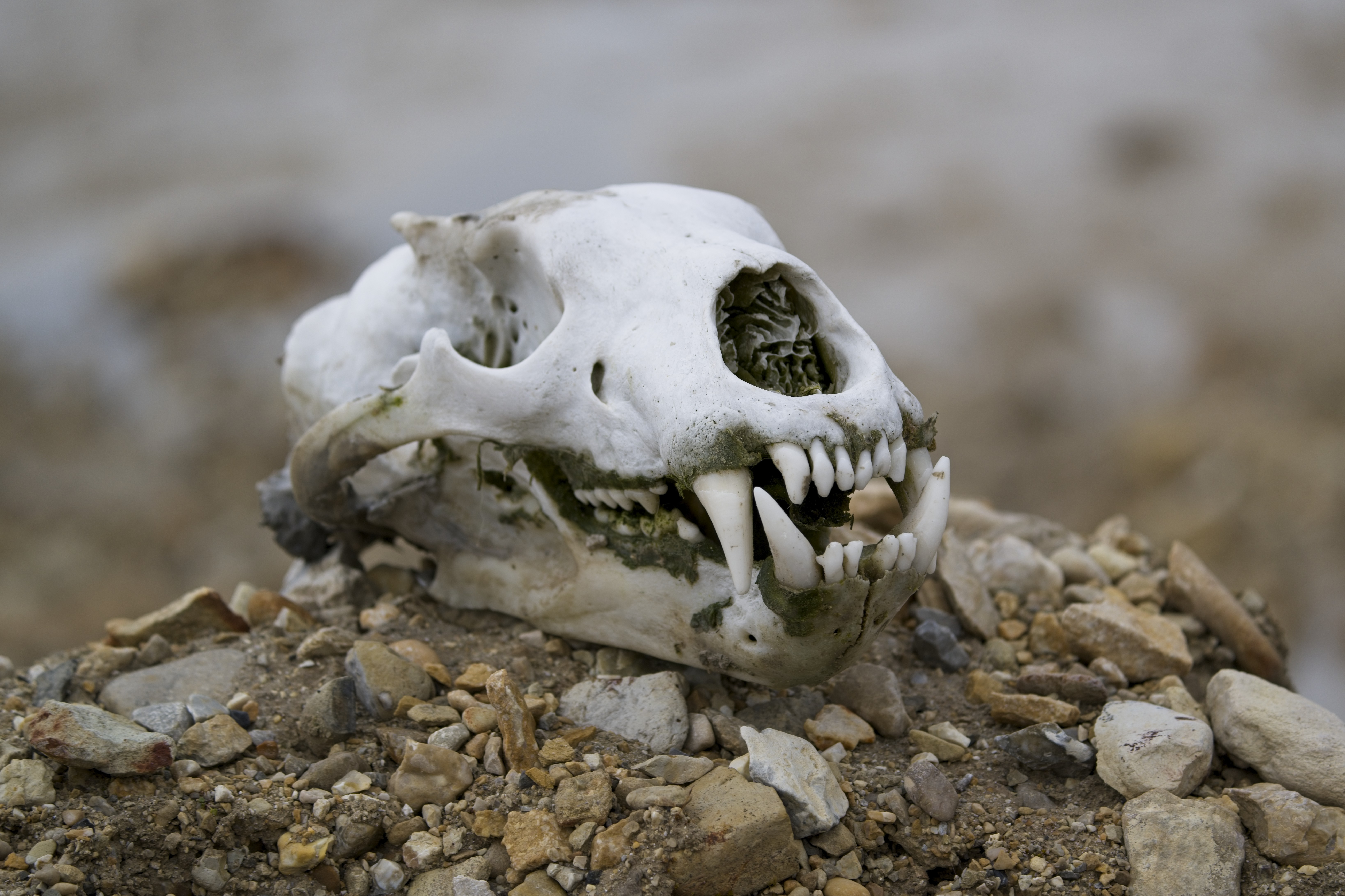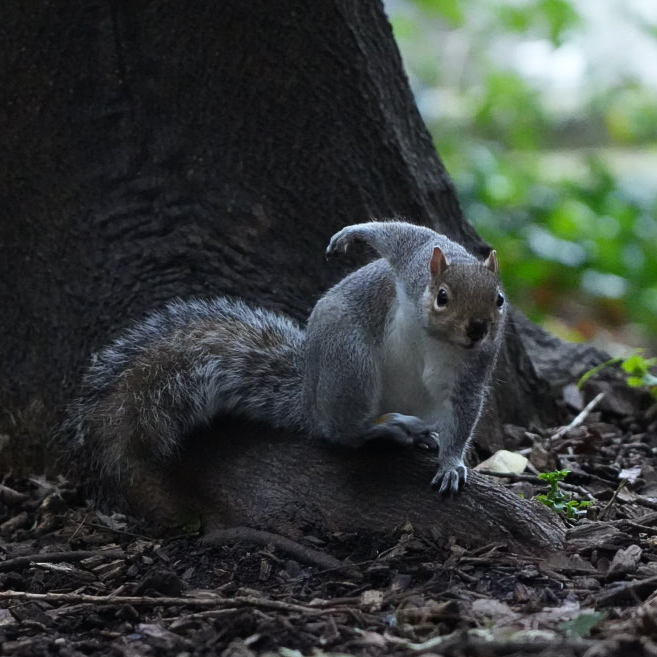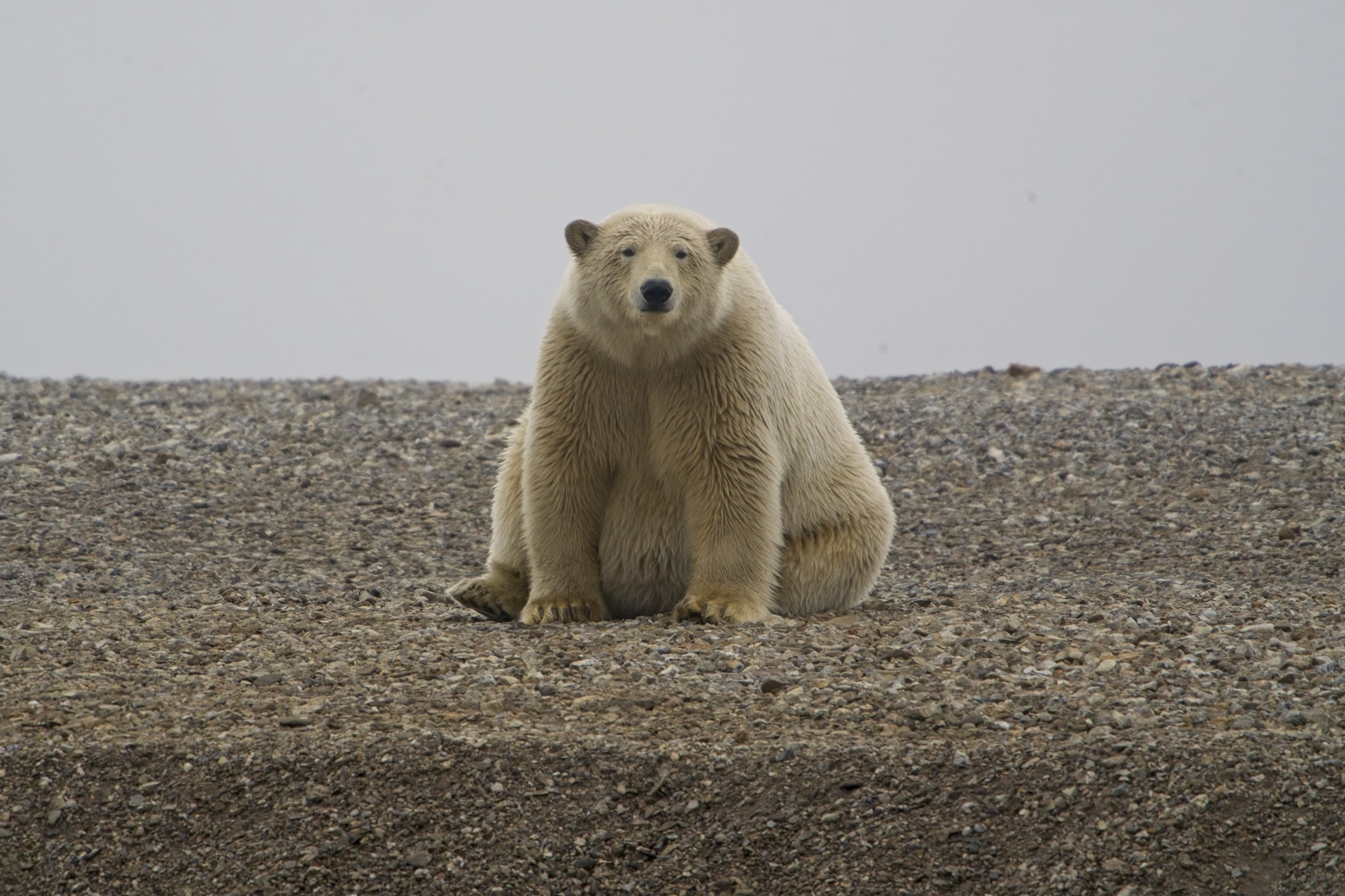Polar Bears
Posted on September 8, 2023 • 5 minutes • 866 words • Other languages: <a href="https://squirrel.photography/it/blog/polar-bears/" lang="it">Italiano</a>
Note: all the photos on this blog are Copyright © Andrea Barberio unless specified otherwise
Table of contents
EDIT: this is a recap video of the Polar season 2023 from SecretAtlas, the exploration company that showed us the beauty and the fragility of the Arctic, https://www.youtube.com/watch?v=e-ztQK71Fq4 .
The undisputed King of the Arctic - the polar bear (Ursus Maritimus) - is a majestic animal that lives in a fragile environment. During my tourist expedition to Svalbard with SecretAtlas we had the luck of meeting several polar bears. My absolute favourite is the one that we named Onigiri: a juvenile polar bear that was sitting near the shore, reminding us of the shape of the delicious japanese food! Goes without saying, Onigiri is on the cover photo of this article.
Polar bears are closely related to brown bears, but they are larger, heavier, stronger than other types of bears. They are also the most aggressive ones, and will eat pretty much anything if they are hungry. Given the dangers of approaching polar bears, remember to always stick to the AECO guidelines for polar bears[1] , to keep both you and the polar bears safe.
Diet
They are opportunistic carnivores, meaning that they normally eat meat, but will also eat eggs or plants when food is scarce. We found a polar bear feeding from a whale carcass that was washed ashore a month before.
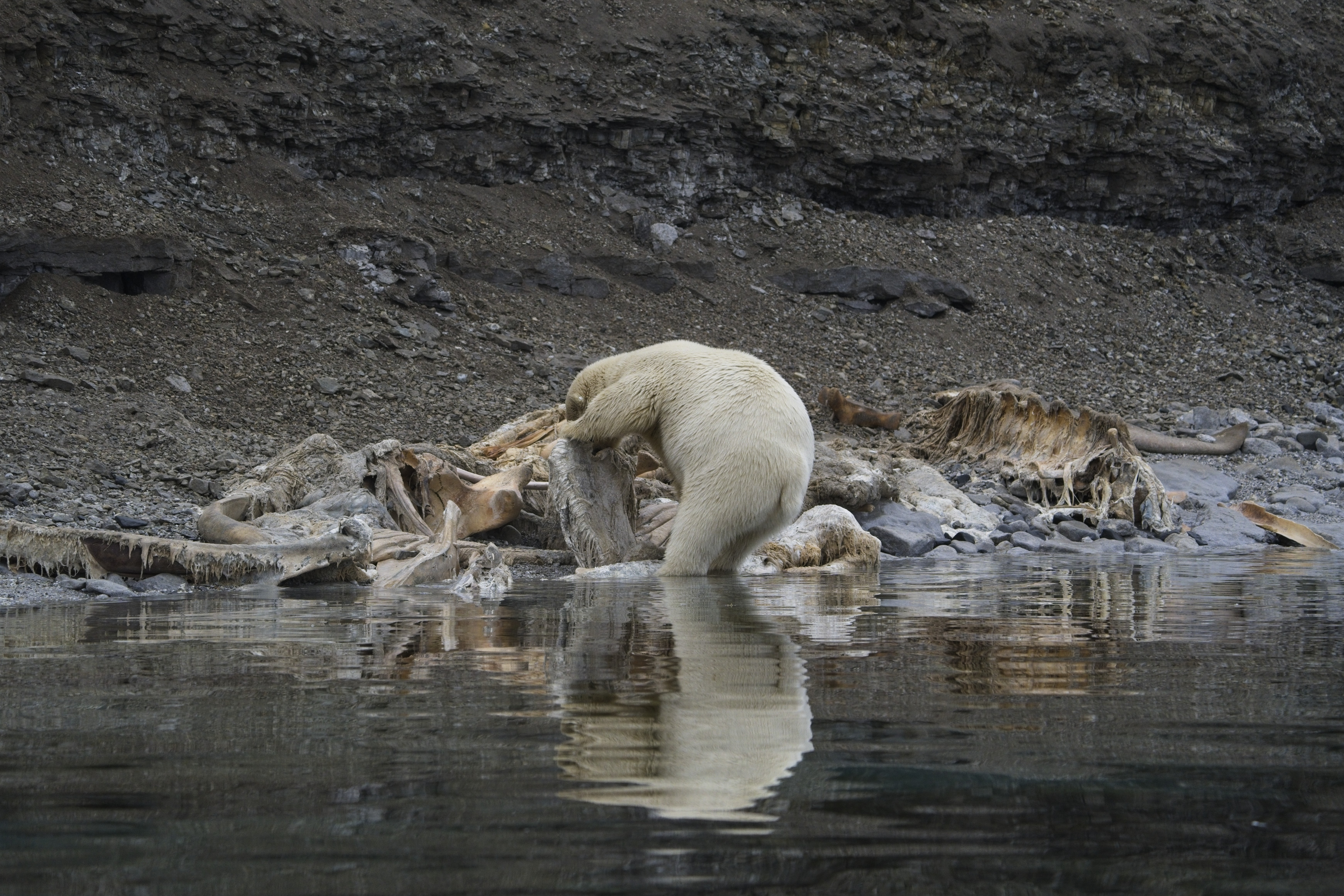
Their favourite meal are ringed seals (Pusa Hispida), from which they mainly eat skin and fat, which they need to prepare for winter. The food scraps that they leave behind are appreciated by other animals like birds and arctic foxes, but also by other bears that might get close to beg some food from the hunt. Also polar bears don’t need to drink! They get the water they need from seal fat.
Below a photo of the polar bear snacking and playing with kelp in the water.
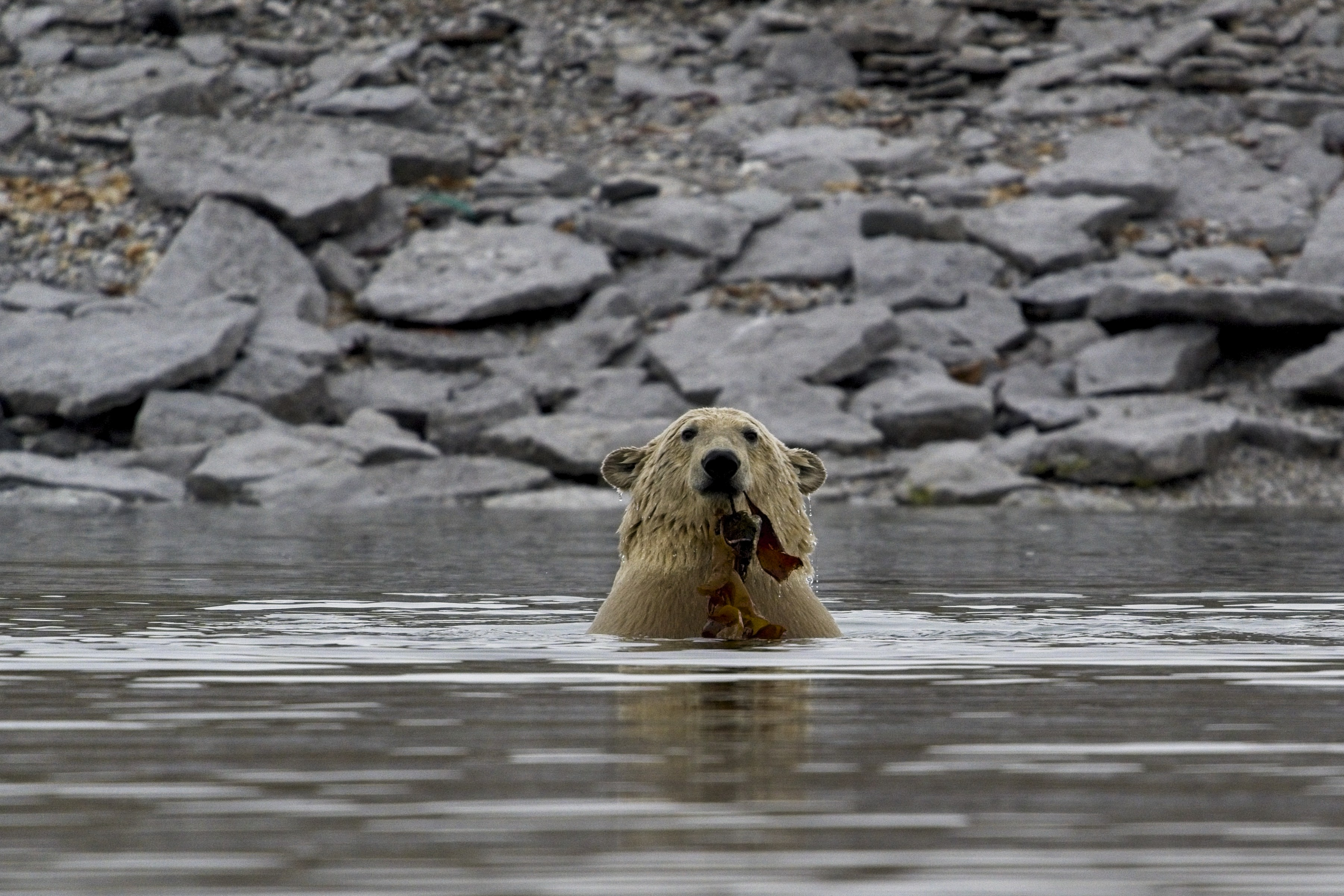
Appearance
Polar bears are the apex predator of the Arctic, and are heavily adapted to such environment. They have two layers of fur: an undercoat, and a layer of guard hair. The former keeps them warm, while the latter adds extra protection from ice and cold. It also gives them their distinctive white-ish appearance. However polar bears tend to look more yellow-ish than white, mostly because it gets dirty from the oil of the seals they feed upon.
Their skin and tongue are black, to absorb as much heat as possible, and below the skin they have a thick layer of blubber, necessary to keep them warm in the harsh Arctic environment, especially during winter or while swimming. They even have fur under their paws! It keeps them warm, and stable when walking on the snow. Their claws are long and curved, so they can hook to the ice and avoid slipping.
Males are bigger and heavier than females, but their sexual dimorphism only shows up after a few years[2] .
No matter how strong and aggressive polar bears can be.. they are fluffy! And they like to play. In one of our encounters, a polar bear decided to put up a little water show, doing funny backflips in the water and throwing kelp around.
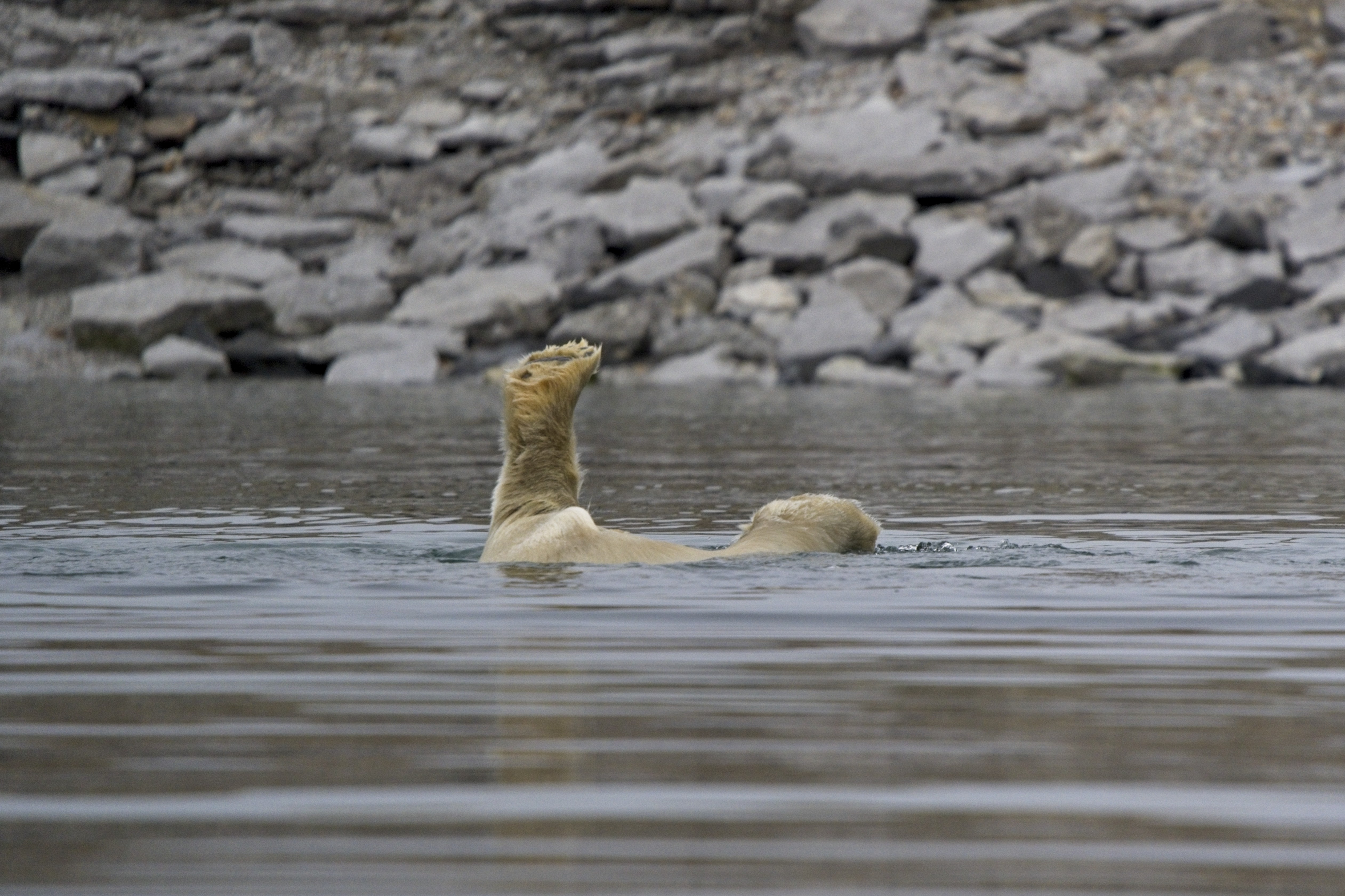
As part of the show, the polar bear was also shaking off after every dive, which made for some nice “because I’m worth it” commercial shots!
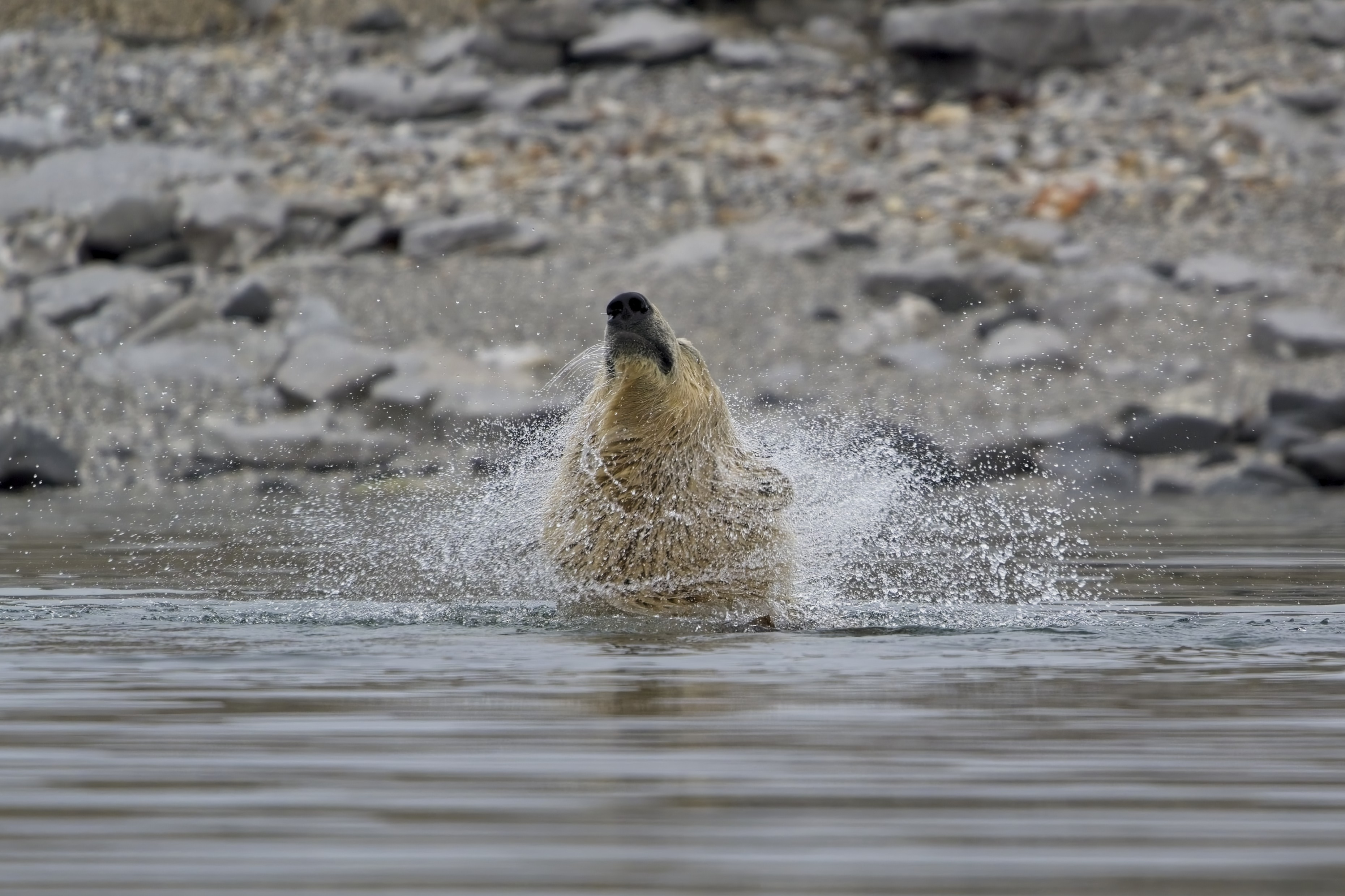
Sense of smell
Polar bears have a very developed sense of smell, capable of smelling prey from many kilometers away! They use it for hunting on land and ice, but they can also smell prey under the ice. Their sense of smell is so acute that it helps them find breathing holes (the holes in the ice that seals use to breathe in between immersions), and even seal pup dens under the ice. Once found, they crush the surface of the ice with their forelegs, after standing on their back legs to gain momentum, and capture the seal pup.
Polar bears stick their tongue out a lot! During our expedition I captured a single polar bear sticking its tongue out at least 10 times in around half an hour. I am not sure about why they do so, my best guess is that it’s related to their olfactory system. If you know more, please let me know !
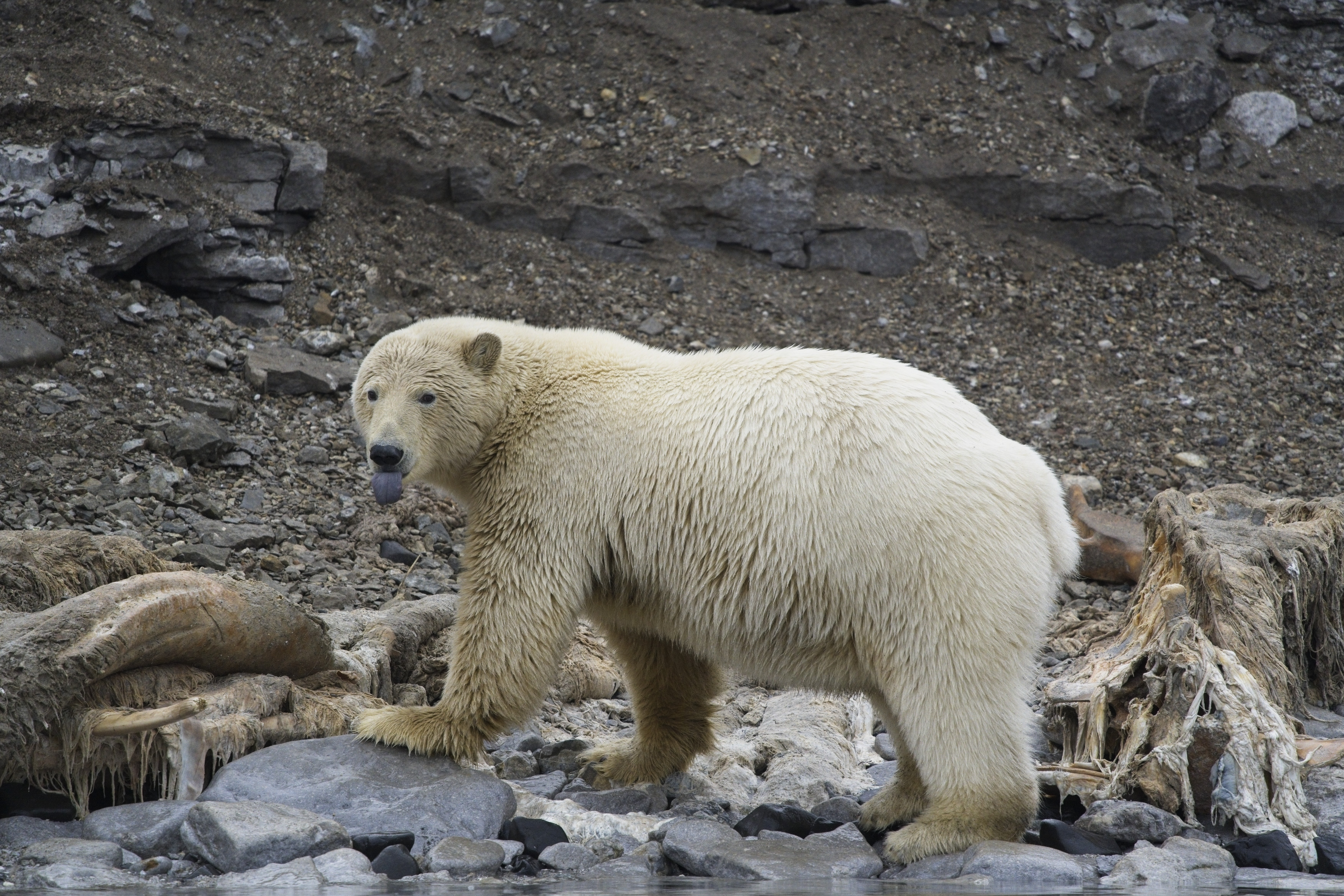
Threats
Polar bears are the apex predators, but it doesn’t mean that they are safe. The main threat to their existence is the disappearence of their habitat: just like the walrus , polar bears depend on the abundance of floating ice to hunt seals. However with temperatures rising twice as fast in the polar regions than in the rest of the world, a lot of the ice that polar bears depend on is going away, making their quest for survival harder and harder.
During our expedition we found two dead polar bears. In one case, the skull was laying in quicksand, which we suppose is what trapped and eventually killed the bear. You can see it in the photo below, look at how large and complex is their nose cavity[4,5] !
